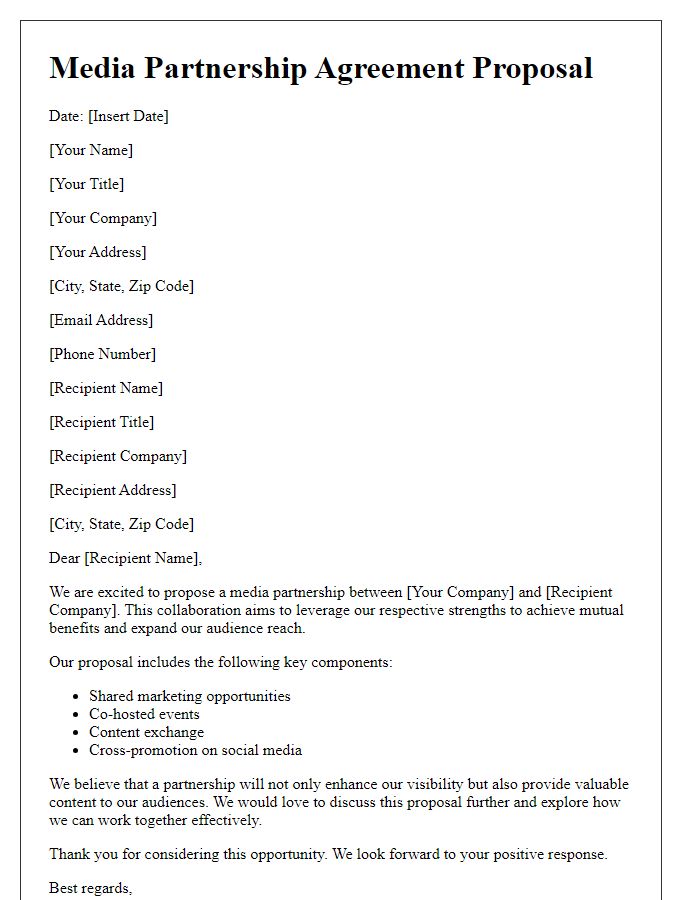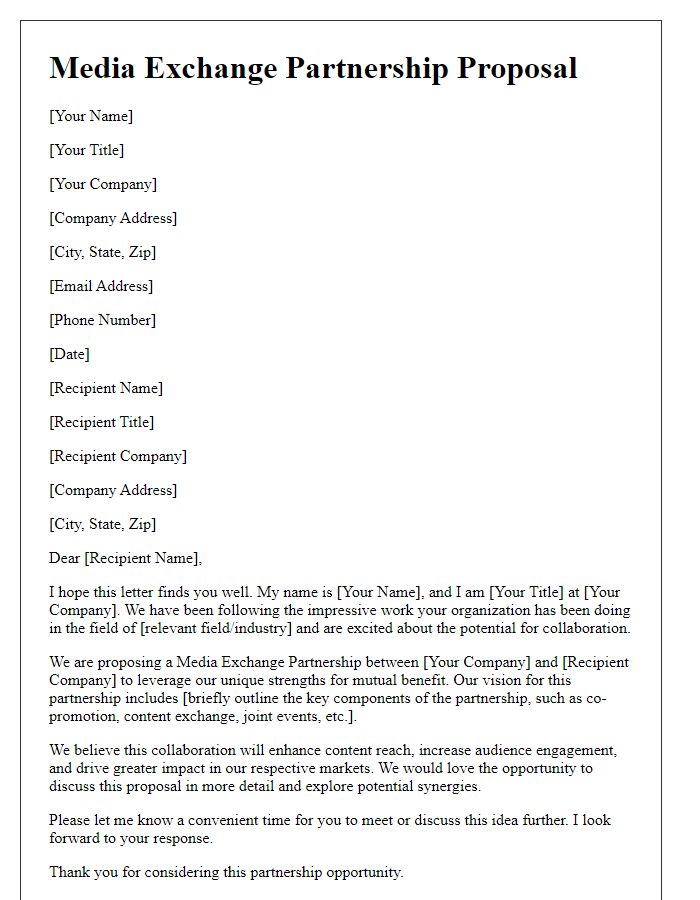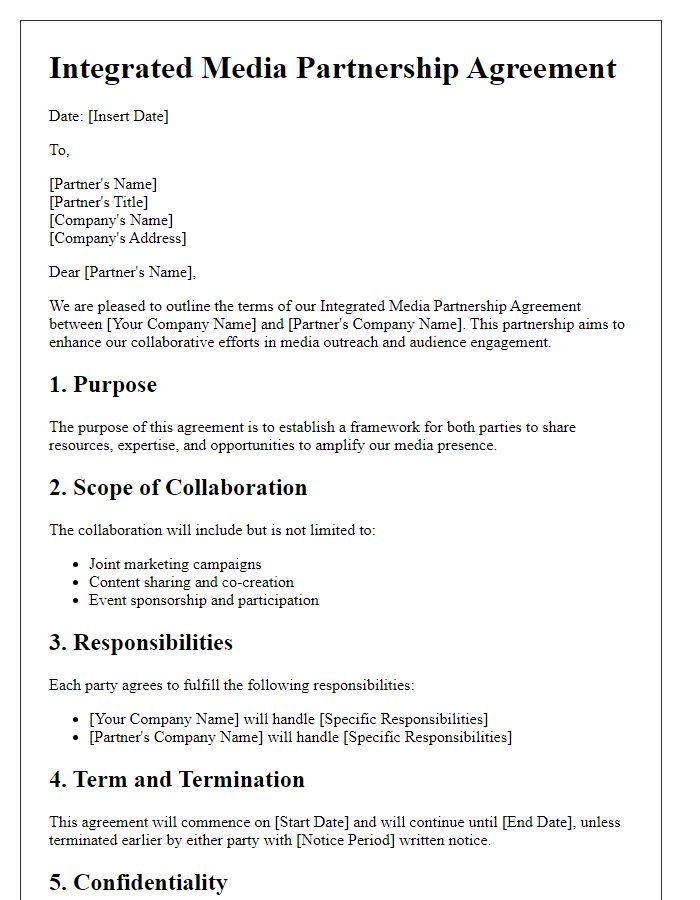Are you looking to enhance your organization's visibility and reach? A media partnership agreement could be the perfect solution for fostering collaboration with key media outlets. By leveraging each other's strengths, you can create impactful content that resonates with your target audience. Curious about how to craft an effective letter for this partnership? Read on to discover some essential tips and a sample template!

Parties Involved
The media partnership agreement involves two primary parties, typically characterized as the "Media Entity" and the "Partner Organization." The Media Entity refers to a specific outlet, which can be a newspaper, television network, or digital platform, that aims to leverage its reach and influence to promote events or campaigns. The Partner Organization is generally a nonprofit, corporate sponsor, or event organizer seeking to amplify their message or increase visibility through media exposure. This partnership aims to create a collaboration that benefits both parties, enhancing audience engagement and facilitating shared marketing efforts.
Objectives and Collaboration Scope
The media partnership agreement outlines clear objectives and collaboration scope between involved parties. Primary objectives include enhancing brand visibility through joint marketing initiatives, leveraging shared audiences, and increasing engagement via co-branded content across digital platforms. For instance, social media campaigns targeting demographic segments in urban areas may aim to attract a minimum of 30,000 unique viewers per month. Collaborative efforts may also focus on events, such as webinars or industry conferences, where mutual participation could generate insights and foster networking opportunities. The scope encompasses content creation, sharing of resources, and performance metrics tracking to evaluate the success of the partnership in real-time. Regular feedback sessions, scheduled quarterly, will ensure alignment and strategic adjustments as needed.
Content and Deliverables
A media partnership agreement entails a detailed outline of content and deliverables expected from both parties. Deliverables could include digital assets like articles, videos, or podcasts designed for specific platforms such as social media channels (e.g., Instagram, YouTube) or websites. For instance, partnerships may require four articles per month covering relevant industry news, each consisting of approximately 800 words that are optimized for search engines to enhance visibility. Additionally, visual content like infographics should accompany each article to improve engagement rates, targeting an increase in website traffic by 20%. Timelines for submissions, revisions, and approvals need to be clearly defined to ensure alignment on project milestones. Regular performance metrics, such as engagement rates and reach, are necessary for evaluating the success of delivered content, enabling partners to adjust strategies as needed to achieve mutual goals.
Duration and Termination Conditions
The media partnership agreement encompasses a duration of two years, commencing on January 1, 2024, and concluding on December 31, 2025. Early termination conditions stipulate that either party may terminate the agreement through written notice, provided a minimum of 60 days' notice is given prior to the effective termination date. Grounds for termination include breach of contract, failure to meet obligations, or any unlawful conduct. The parties may also mutually agree to terminate the contract at any point during the agreement's term, ensuring both entities can reassess and adjust their partnership as needed.
Confidentiality and Intellectual Property Rights
Media partnership agreements often encompass crucial elements such as confidentiality and intellectual property rights, which are essential for protecting sensitive information and creative works. Confidentiality clauses protect proprietary data, ensuring that both parties maintain confidentiality regarding shared materials, trade secrets, and business strategies. Typically, violations could lead to legal repercussions. Intellectual property rights address ownership over created content, including logos, videos, articles, and other media. Establishing clear terms regarding usage, licensing, and attribution is vital to prevent disputes. This framework lays the foundation for a successful and collaborative media partnership, fostering trust and mutual respect while safeguarding valuable assets.













Comments